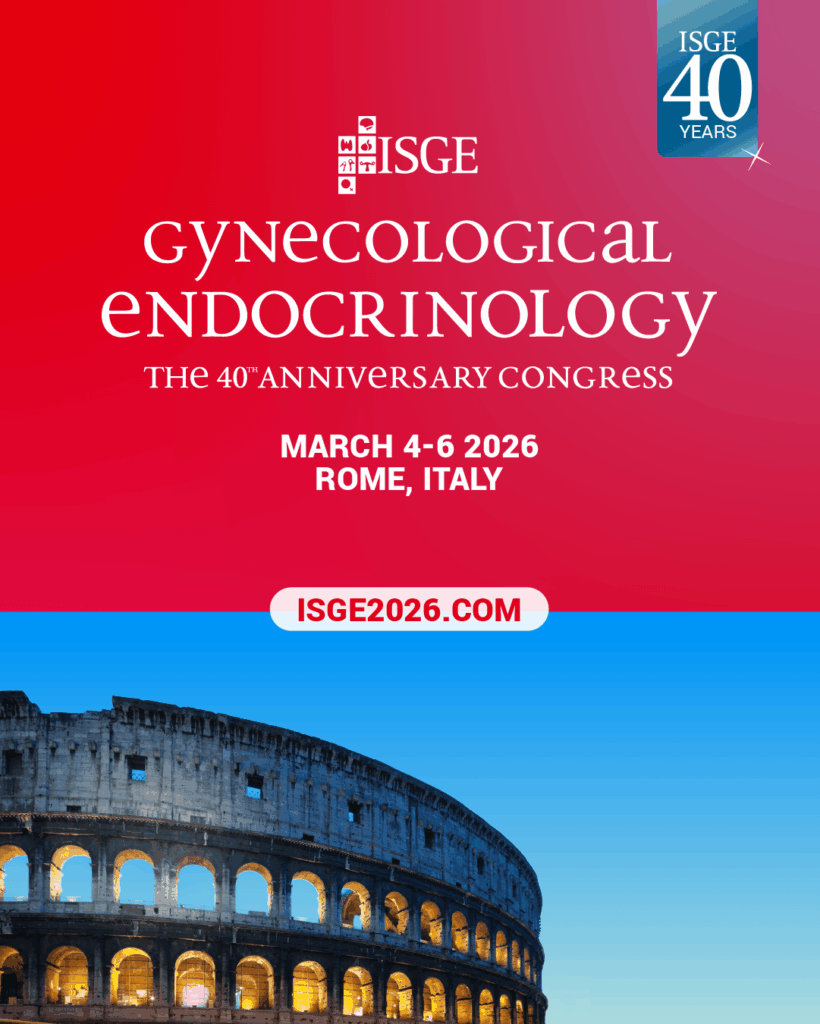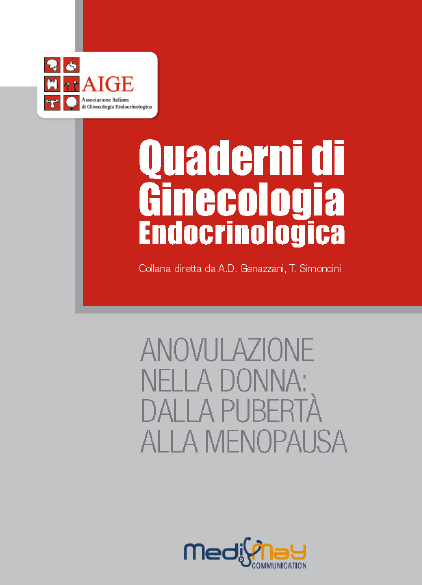-
Santiago Palacios, Skouby Sven, Luis Beltrán, Tommaso Simoncini, Cuauhtémoc Celis-Gonzales, Martin Birkhaeuser, Nestor Siseles, Andrea Riccardo Genazzani
Therapeutic approaches for vasomotor symptoms and sleep disorders in menopausal women Gynecological and Reproductive Endocrinology and Metabolism 2022; 3(2-3):74-83
DownloadAbstract
Introduction: Vasomotor symptoms and their concomitant sleep disorders affect quality of life and well-being of menopausal women. Menopausal hormone therapy is the first prescribed option for treating vasomotor symptoms such as hot flushes and insomnia. However, menopausal hormone therapy is contraindicated for women with current or prior history of breast cancer. Therefore, in women with contradictions or those that refuse hormonal/pharmacological options it is necessary to consider non-pharmacological/non-hormonal treatments. Aim: The aim of this review is to provide an update on the non-pharmacological/non-hormonal interventions for treating vasomotor symptoms and sleep disorders during menopause.
Methods: We reviewed the literature regarding vasomotor symptoms and several sleep disorder interventions reported in PubMed, Google Scholar, and Web of Science. Particularly, this scientific update was focused on non-hormonal -pharmacological and non-pharmacological treatments. We considered studies showing possible and potential side effects from these interventions for peri- and postmenopausal women regarding their prior health conditions, current lifestyles and their ethnicities.
Results: There are non-pharmacological treatments without side effects that alleviate simultaneously hot flushes and insomnia. These represent reasonable and efficacious interventions especially in the presence of contraindications to menopausal hormone therapy or when women are particularly motivated towards natural approaches.
Conclusions: It is necessary to continue evaluating non-pharmacological alternatives in order to avoid potential side effects and toxicity of pharmacological treatments. These alternatives could present long-term patients’ compliance in simultaneous treatments for hot flushes and chronic sleep disorders such as insomnia. -
Saulė Starkauskaitė, Žana Bumbulienė
Abnormal uterine bleeding in adolescents: causes, challenges and concerns Gynecological and Reproductive Endocrinology and Metabolism 2022; 3(2-3):99-102
DownloadAbstract
Abnormal uterine bleeding (AUB) is the most common gynaecologic complaint of adolescents, requiring a good knowledge in terms of etiology and diagnostic methods to provide the best management of the condition. Ovulation disorders, mostly because of hypothalamic-pituitary- ovarian immaturity, is the main cause of AUB. Another leading etiology is haemostatic disorders that should always be suspected in cases of heavy menstrual bleeding since the menarche. Furthermore, various endocrinopathies and sexual activity related conditions should also be kept in mind. Diagnostic methods and management of the AUB highly depends on patient’ medical history and symptoms. In any case, anovulatory heavy bleeding is usually treated successfully with combined oral contraceptives and iron supplementation either as an outpatient or in hospital.
-
Alice Antonelli, Andrea Giannini, Peter Chedraui, Patrizia Monteleone, Marta Caretto, Alessandro D. Genazzani, Paolo Mannella, Tommaso Simoncini, Andrea R. Genazzani
Mood disorders and hormonal status across women’s life: a narrative reviewGynecological Endocrinology 38: 1019–1027, 2022Abstract
Depressive disorders and anxiety states represent one of the most frequent psychiatric pathologies occurring transiently in vulnerable women throughout their life, from puberty to menopause. It is now known that sex hormones play a key role on the nervous system, interfering with neuronal plasticity and enhancing the processes of learning, memory, cognition, and mood. Numerous mechanisms are at the base of these processes, displaying interactions between estrogen and serotoninergic, dopaminergic, and GABAergic receptors at the central level. Therefore, given the sexual steroids fluctuations throughout the entire female lifespan, and considering the role played by sex hormones at the central level, it is not surprising to observe the onset of mood or neurodegenerative disorders over time. This is especially true for women in hormonal transition phase, such as puberty, postpartum and the menopausal transition. Moreover, all these conditions are characterized by hormone withdrawal, imbalance, or modifications due to menopausal hormone therapies or contraceptives which could prompt to a deterioration of mood and cognition impairment or to an improvement in the quality of life. More studies are needed to better understand the hormone-related effects on the nervous system, and the underlying pathways involved in transitional or chronic mood disorders, to promote new patient-specific therapeutic strategies more effective than the current ones and tailored according to the individual need and women’s life period
-
Yue Wang, Ruilin Ma, Ying Zou, Wei Wang, Qingmei Zheng, Ying Feng, Han Dong, Zhangyun Tan, Xiaoqin Zeng, Yinqing Zhao, Yan Deng, Yanfang Wang, Bei Gu and Aijun Sun
The role of obstetrician-gynecologists and reproductive endocrinologists in the blood glucose management of polycystic ovary syndromeGynecological Endocrinoloy 38: 1114–1120, 2022Abstract
BACKGROUND: This study aimed to compare the differences between reproductive endocrinologists (Repro-Endo) and obstetricians-gynecologists (Ob-Gyn; non-reproductive medicine specialty) in diagnosing, evaluating, and treating PCOS women with insulin resistance (IR).
Methods: Repro-Endo and Ob-Gyn in China participated in this survey, and their responses were analyzed using χ2 tests, Fisher exact tests, and multivariable logistic regression analysis.
Results: The study analyzed 2412 survey responses (92.3% OB-Gyn; 98.5% women). Physician’s age, hospital grade, specialty, and the number of PCOS patients who visit the physicians, revealed that Repro-Endo participants were more likely to suggest an oral glucose tolerance test (OR, 1.727; 95% CI, 1.272–2.345) as their first choice than Ob-Gyn participants. The most common treatments for patients with PCOS were lifestyle modification (>95%) and metformin use (>80%). More Repro-Endo participants prescribed metformin at a dose of 1.5 g/day compared with OB-Gyn (46.5% vs. 23.5%), and more OB-Gyn participants reported being unclear about the appropriate dosage of metformin for patients with obesity and PCOS (12.5% vs. 1.6%).
Conclusion: This survey identified knowledge gaps in metabolic screening for patients with IR and PCOS. Similarly, it highlights the need to improve IR management education for physicians caring for PCOS women -
A. C. Fernández Rísquez, N. Mendoza Ladrón de Guevara, A. Carballo García, J. J. Hijona Elósegui & J. C. Presa Lorite
Study of pelvic organ prolapse as a predictor of osteoporotic fracture risk
Gynecological Endocrinoloy 38: 1147–1152, 2022Abstract
Purpose: The present study aimed to examine the association between the stage of pelvic organ prolapse (POP) and the risk of fracture in postmenopausal women.
Methods: A cross-sectional design was used, which included 133 women with POP over 50 years of age. The participants were classified according to their POP stage, underwent blood tests (hemogram, biochemistry, bone remodeling markers, and hormone tests), and completed a sociodemographic and lifestyle questionnaire along with densitometry, FRAX, and FRIDEX tests.
Results: Of the 133 women studied, 66 presented stages I-II POP (49.6%) and 67 III-IV POP (50.4%). The mean age of the participants was 64.47 years. Women with a high POP stage showed higher FRAX scores for major osteoporotic and hip fracture (p .001 and p < .001p). Bivariate analysis revealed that higher scores on the FRIDEX scale were associated with a higher POP stage (p = .032). In addition, there was a marginally significant negative association between bone mineral density (BMD) and POP stage (p = .054).
Conclusions: High-stage POP can be considered an independent predictor of osteoporotic fracture risk, as measured using the FRAX and FRIDEX scales -
Winfried G. Rossmanith
Neuroendocrine Blockade of the Reproductive Axis in Female Athletes
Endocrines 2022, 3(4), 765-774
DownloadAbstract
This review aims at defining the neuroendocrine mechanisms underlying the sport-induced restrictions of the reproductive axis in female athletes. Episodic gonadotropin release was found to be compromised, presumably a result of impaired hypothalamic pulsatile GnRH release. Any deviation from optimal gonadotropin release may result in a suboptimal function of the ovaries, leading to disorders of the menstrual cycle and ovulation. A whole spectrum of menstrual dysfunctions ranging from ovulatory eumenorrhea to luteal phase defects and amenorrhea has been reported in sportive women. As essential neuroendocrine factors underlying these observations, activation of the adrenal axis and altered central nervous neurotransmitter activity have been identified to transfer metabolic, nutritional, and stress signals into the hypothalamic GnRH release. The degree by which the neuroendocrine axis governing reproduction is impaired critically depends on the intensity and duration of exercise and the state of training. Other decisive factors may be energy expenditure and availability, nutritional components, and the maturity of the hypothalamic-pituitary-ovarian (HPO) axis when sport activity was initiated. In conclusion, the gradual cessation of reproductive function observed in female athletes may be interpreted as an adaptive mechanism in response to physical and psychological endurance during sport. This sport-induced restriction of reproductive capacity may serve as protection (endogenous contraception) to preserve a woman’s health.
-
Yanmin Zhong, Sujian Peng, Qiujun Chen, Dongyin Huang, Guanglan Zhang, Zehong Zhou
Preconceptional thyroid stimulating hormone level and fecundity: a community-based cohort study of time to pregnancyFertil Steril 2023;119:313-21
DownloadAbstract
Objective: To investigate the association between preconception thyroid stimulating hormone (TSH) level and time to pregnancy within a community-based population.
Design: A community-based cohort study.
Setting: Two free preconception check-up centers.
Patient(s): Women who enrolled in the National Free Preconception Check-up Projects from January 1, 2018 to December 31, 2018 in Tianhe and Zengcheng districts of Guangzhou city.
Intervention(s): None.
Main Outcome Measure(s): Time to pregnancy.
Result(s): A total of 1,478 women were eligible for the analysis; of these, 1,401 had a preconception TSH level within the range of 0.50 and 5.59 mIU/L (2.5th–97.5th percentiles) were taken as target study population. Among them, 968 (69.1%) couples achieved pregnancy within the first 6 months and 1,082 (77.2%) within 12 months. Dichotomized by the recommended cut-off value of 2.5 mIU/L, the percentage of women conceived in the high TSH level category (2.50–5.59 mIU/L) was comparable to that of the low category (0.50–2.49 mIU/L) (79.0% vs. 78.1%), with a crude fecundity odd ratio of 0.99 (95% confidence interval at 0.87–1.13). No statistically significant difference was observed after the adjustment in all models. Continuous TSH level was further examined, and the nonlinear association between TSH level and fecundity odds ratios was of no statistical significance.
Conclusion(s): Preconception TSH level was not associated with fecundity in a healthy community-based population. Women attempting pregnancy with a TSH level R 2.5 mIU/L can be reassured that they are unlikely to have an increased time to pregnancy -
Benjamin S. Harris, Anne Marie Jukic, Tracy Truong, Caroline T. Nagle, Alaattin Erkanli, Anne Z. Steiner
Markers of ovarian reserve as predictors of future fertilityFertil Steril 2023;119:99–106Abstract
Objective: To determine the association between ovarian reserve biomarkers and future fertility among late reproductive-age women.
Design: Cohort study of participants enrolled in Time to Conceive (TTC), a time-to-pregnancy cohort study of the ovarian reserve biomarkers.
Patient(s): Women aged 30–44 years without a history of infertility who provided a blood sample at enrollment in TTC and who agreed to future follow-up.
Main Outcome Measure(s): The primary outcomes were probability of achieving a live birth >3 years after enrollment in TTC, diagnosis of infertility at any time, and time-to-pregnancy in future pregnancy attempts.
Result(s): Women with diminished ovarian reserve, defined as those with an antim€ullerian hormone (AMH) level <0.7 ng/mL or follicle-stimulating hormone (FSH) level R10 mIU/mL, did not have low risk of future live birth (relative risk [RR], 1.32; 95% confidence interval [CI], 0.95–1.83 and RR, 1.28; 95% CI, 0.97–1.70, respectively) compared with women with normal ovarian reserve after adjusting for age at blood draw, race, obesity, use of hormonal contraception, and year of enrollment in original study. Among women in the cohort that attempted to conceive, there was not a significant association between diminished ovarian reserve, as measured by AMH or FSH, and risk of future infertility (RR, 0.65; 95% CI, 0.21–2.07 and RR,1.69; 95% CI, 0.86–3.31, respectively). Similarly, there was no association between AMH and FSH levels and future fecundability (fecundability ratio, 0.97; 95% CI, 0.59, 1.60; and fecundability ration, 0.86; 95% CI, 0.55–1.36, respectively).
Conclusion: Diminished ovarian reserve is not associated with reduced future reproductive capacity. Given the lack of association, women should be cautioned regarding use biomarkers of ovarian reserve as predictors of their future reproductive capacity -
Xiuxian Zhu, Yonglun Fu
Extending letrozole treatment duration is effective in inducing ovulation in women with polycystic ovary syndrome and letrozole resistance
Fertil Steril 2023;119:107–13
DownloadAbstract
Objective: To evaluate whether extending letrozole (LE) treatment duration could induce ovulation in women with polycystic ovary syndrome (PCOS) who previously failed to ovulate after a 5-day regimen of 5 mg LE daily for at least 1 ovulation induction cycle, defined as ‘‘LE resistance’’.
Design: Retrospective cohort study. Setting: Tertiary care academic medical center. Patient(s): A total of 69 women with PCOS and LE resistance were included. Intervention(s): The duration of LE treatment was increased in a stepwise manner (named as ‘‘2-step extended LE regimen’’): a 7-day regimen of 5 mg LE daily was prescribed in the first ovulation induction cycle, and if ovulation did not occur, a 10-day regimen was prescribed in the subsequent cycle.
Main Outcome Measure(s): Ovulation rate was the primary outcome. Clinical pregnancy rate, live birth rate, spontaneous ovulation rate, and ovarian hyperstimulation syndrome rate were the secondary outcomes.
Result(s): Of the 69 patients, 48 ovulated after the 7-day and 16 after the 10-day regimen. Overall, the cumulative ovulation rate reached 92.75% (64/69) after the 2-step extended LE regimen, with a cumulative clinical pregnancy rate of 31.88% (22/69) and a cumulative live birth rate of 24.63% (17/69). All patients ovulated spontaneously without exogenous trigger agents and none experienced ovarian hyperstimulation syndrome.
Conclusion(s): Extending LE treatment duration is a feasible method for inducing ovulation in women with PCOS and LE resistance -
Scott M Nelson, Susan R Davis, Sophia Kalantaridou, Mary Ann Lumsden, Nick Panay, Richard A Anderson
Anti-Müllerian hormone for the diagnosis and prediction of menopause: a systematic review Human Reproduction Update, pp. 1–20, 2023
DownloadAbstract
BACKGROUND: The early onset of menopause is associated with increased risks of cardiovascular disease and osteoporosis. As a woman’s circulating anti-Mu¨llerian hormone (AMH) concentration reflects the number of follicles remaining in the ovary and declines towards the menopause, serum AMH may be of value in the early diagnosis and prediction of age at menopause.
OBJECTIVE AND RATIONALE: This systematic review was undertaken to determine whether there is evidence to support the use of AMH alone, or in conjunction with other markers, to diagnose menopause, to predict menopause, or to predict and/or diagnose premature ovarian insufficiency (POI).
SEARCH METHODS: A systematic literature search for publications reporting on AMH in relation to menopause or POI was conducted in PubMedVR , EmbaseVR , and the Cochrane Central Register of Controlled Trials up to 31 May 2022. Data were extracted and synthesized using the Synthesis Without Meta-analysis for diagnosis of menopause, prediction of menopause, prediction of menopause with a single/repeat measurement of AMH, validation of prediction models, short-term prediction in perimenopausal women, and diagnosis and prediction of POI. Risk-of-bias was evaluated using the Tool to Assess Risk of Bias in Cohort Studies protocol and studies at high risk of bias were excluded.
OUTCOMES: A total of 3207 studies were identified, and 41, including 28 858 women, were deemed relevant and included. Of the three studies that assessed AMH for the diagnosis of menopause, one showed that undetectable AMH had equivalent diagnostic accuracy to elevated FSH (>22.3 mIU/ml). No study assessed whether AMH could be used to shorten the 12 months of amenorrhoea required for a formal diagnosis of menopause. Studies assessing AMH with the onset of menopause (27 publications [n ¼ 23 835 women]) generally indicated that lower age-specific AMH concentrations are associated with an earlier age at menopause. However, AMH alone could not be used to predict age at menopause with precision (with estimates and CIs ranging from 2 to 12 years for women aged <40 years). The predictive value of AMH increased with age, as the interval of prediction (time to menopause) shortened. There was evidence that undetectable, or extremely low AMH, may aid early diagnosis of POI in young women with a family history of POI, and women presenting with primary or secondary amenorrhoea (11 studies [n ¼ 4537]).
WIDER IMPLICATIONS: The findings of this systematic review support the use of serum AMH to study the age of menopause in population studies. The increased sensitivity of current AMH assays provides improved accuracy for the prediction of imminent menopause, but diagnostic use for individual patients has not been rigorously examined. Prediction of age at menopause remains imprecise when it is not imminent, although the finding of very low AMH values in young women is both of clinical value in indicating an increased risk of developing POI and may facilitate timely diagnosis.
Abstracts selezionati
-
Santiago Palacios, Skouby Sven, Luis Beltrán, Tommaso Simoncini, Cuauhtémoc Celis-Gonzales, Martin Birkhaeuser, Nestor Siseles, Andrea Riccardo Genazzani
Therapeutic approaches for vasomotor symptoms and sleep disorders in menopausal women Gynecological and Reproductive Endocrinology and Metabolism 2022; 3(2-3):74-83
Download -
Saulė Starkauskaitė, Žana Bumbulienė
Abnormal uterine bleeding in adolescents: causes, challenges and concerns Gynecological and Reproductive Endocrinology and Metabolism 2022; 3(2-3):99-102
Download -
Alice Antonelli, Andrea Giannini, Peter Chedraui, Patrizia Monteleone, Marta Caretto, Alessandro D. Genazzani, Paolo Mannella, Tommaso Simoncini, Andrea R. Genazzani
Mood disorders and hormonal status across women’s life: a narrative reviewGynecological Endocrinology 38: 1019–1027, 2022 -
Yue Wang, Ruilin Ma, Ying Zou, Wei Wang, Qingmei Zheng, Ying Feng, Han Dong, Zhangyun Tan, Xiaoqin Zeng, Yinqing Zhao, Yan Deng, Yanfang Wang, Bei Gu and Aijun Sun
The role of obstetrician-gynecologists and reproductive endocrinologists in the blood glucose management of polycystic ovary syndromeGynecological Endocrinoloy 38: 1114–1120, 2022 -
A. C. Fernández Rísquez, N. Mendoza Ladrón de Guevara, A. Carballo García, J. J. Hijona Elósegui & J. C. Presa Lorite
Study of pelvic organ prolapse as a predictor of osteoporotic fracture risk
Gynecological Endocrinoloy 38: 1147–1152, 2022 -
Winfried G. Rossmanith
Neuroendocrine Blockade of the Reproductive Axis in Female Athletes
Endocrines 2022, 3(4), 765-774
Download -
Yanmin Zhong, Sujian Peng, Qiujun Chen, Dongyin Huang, Guanglan Zhang, Zehong Zhou
Preconceptional thyroid stimulating hormone level and fecundity: a community-based cohort study of time to pregnancyFertil Steril 2023;119:313-21
Download -
Benjamin S. Harris, Anne Marie Jukic, Tracy Truong, Caroline T. Nagle, Alaattin Erkanli, Anne Z. Steiner
Markers of ovarian reserve as predictors of future fertilityFertil Steril 2023;119:99–106 -
Xiuxian Zhu, Yonglun Fu
Extending letrozole treatment duration is effective in inducing ovulation in women with polycystic ovary syndrome and letrozole resistance
Fertil Steril 2023;119:107–13
Download -
Scott M Nelson, Susan R Davis, Sophia Kalantaridou, Mary Ann Lumsden, Nick Panay, Richard A Anderson
Anti-Müllerian hormone for the diagnosis and prediction of menopause: a systematic review Human Reproduction Update, pp. 1–20, 2023
Download






